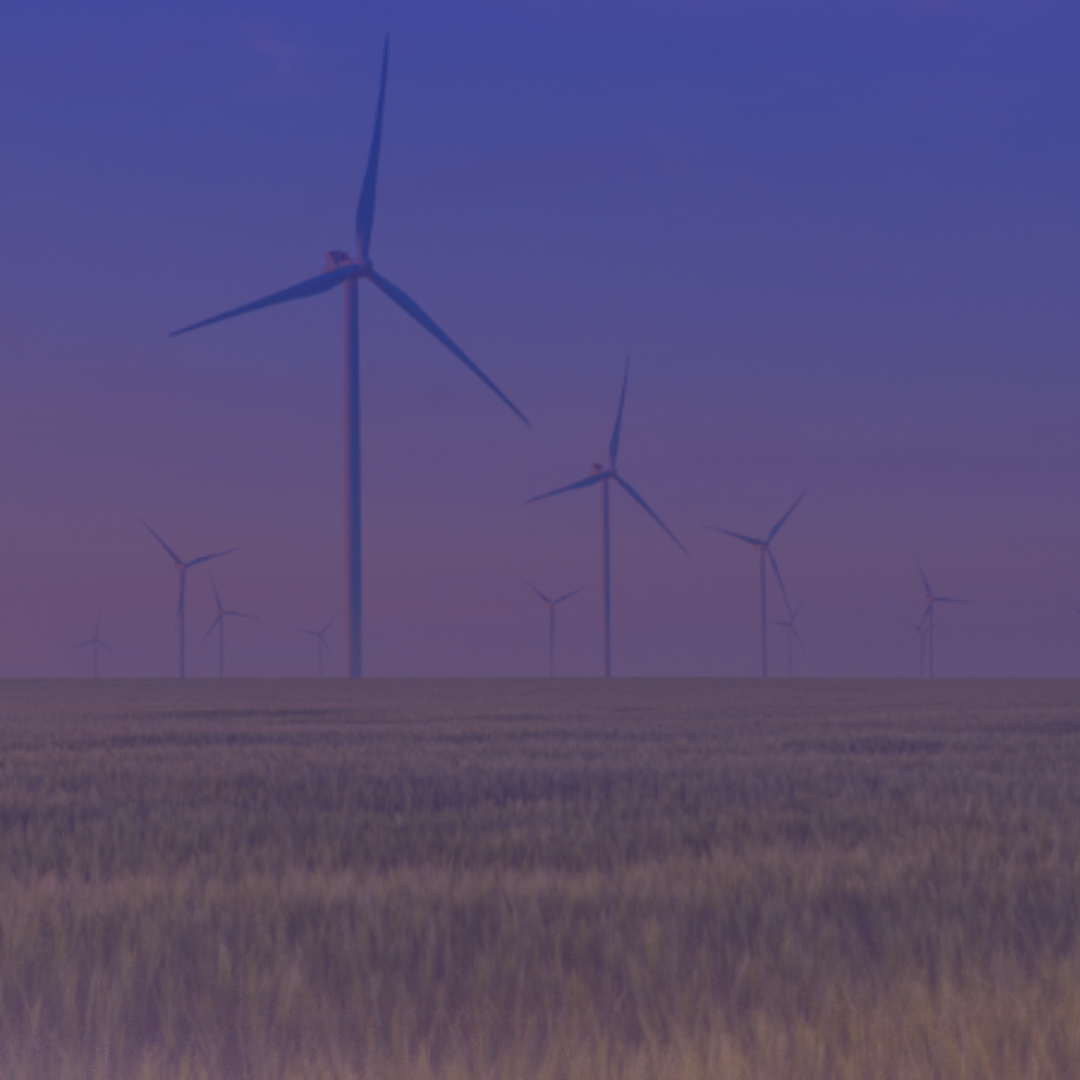
Written by: Maria Tsanova
Edited by: Sara Lolli
Introduction
The prosperity of the European Union (EU) depends on its ability to adapt to the ever-changing global rhythm, as well as face challenges with strategic resilience. One of these challenges is especially relevant today and consists of mitigating and preventing the negative effects of climate change. In this way, the EU can protect the citizens and the environment of Member States (European Parliament, 2023a). With this in mind, the economic union could switch to clean energy sources, since fossil fuels, which are still very widely used for energy production, result in harmful greenhouse gas emissions. Geopolitical turmoil, such as the Ukraine crisis, has enforced a quicker reaction by the EU, since the lack of gas imports in the period March-September had to be compensated to meet consumer demand and deal with rising inflation (Edwards, 2022). Imports create a position of dependence, which increases the vulnerability of Member States in times of conflict (Bentsen & Felby, 2012, p. 1). This puts a spotlight on renewables since they are an opportunity for the EU to meet its energy demand without relying on countries which are not part of the Union (European Parliament, 2023a). Therefore, the boost in the capacity of renewables represents an increase in international security measures and a reduction of dependence on foreign suppliers, while also meeting the electricity needs created by industrialisation and urbanisation (Steffen, 2017, p. 280).
The pie chart below represents the percentage share of the renewable energy sources produced by the EU in 2021: bioenergy and waste, wind, hydro, solar, ambient heat and geothermal. The highest percentage of energy production comes from bioenergy sources. The other two biggest percentage shares are those of wind energy and hydropower (European Parliament, 2023a). Based on these statistics, the European Union has taken its task of renewable energy conversion responsibly. However, more is needed to be done in terms of improving conditions for consumers and investors in order for their energy production to match their consumption (Haas, et al., 2010, p. 2).

European Parliament, 2023a
EU’s Renewable Energy Commitments and Initiatives
Biomass Energy
Definition
Biomass energy has the biggest share of the renewable energy mix of the European Union, despite the rapid development of other renewable energy sources such as wind and solar (European Commission, 2023a). In the EU, biomass is mostly produced from forestry such as logging residues, wood-processing residues, and fuelwood (European Commission, 2019). It accounted for 57.70% of the total energy production for 2021 (European Parliament, 2023a). The biggest consumers of bioenergy in absolute terms are the UK, Sweden, France, Germany, and Italy (European Commission, 2023a).
Benefits
Biomass energy can benefit the EU in many ways. First, the EU’s energy supply can be diversified via an increased usage of biomass energy for “heating, electricity generation, and transport fuels” (European Commission, 2023a). Second, many new job positions can be created and the result would be economic growth due to the expanding workforce and an increase in gross value added (Diplomatic Institute, 2023, p. 57). Third, it does not cause greenhouse emissions, unless there is poor greenhouse gas performance of certain bioenergy pathways (Diplomatic Institute, 2o23, p.129). Indeed, biomass energy produces sufficient amounts of energy that can meet the demand of businesses and private persons (European Commission, 2023a). However, for the goal of biomass energy to be fulfilled, it needs to be produced sustainably. To ensure that the production is performed in an eco-conscious and responsible manner, the EU has introduced the Renewable Energy Directive. The Directive introduces additional criteria for suitability of biomass energy production in regards to agriculture waste and residues, forest biomass, new biofuels, and bioelectricity (European Commission, 2023a).
Moreover, the European Union bases its main decarbonisation objectives on the Single Market Strategy. According to this Strategy, there should be no borders to the free movement of goods and services (Diplomatic Institute, 2023, p. 53). It is the job of the EU to closely follow the development of biomass initiatives and make sure that the usage of the energy produced makes a positive contribution towards climate change mitigation.In addition, the EU should preserve its existing ecosystems as well as optimise the efficiency of the produced biomass energy. Last but not least, distortions of the biomass energy trade market should be prevented while also removing any barriers to the trade of biomass energy (Diplomatic Institute, 2023, p. 40), as they would distort the EU internal market (Diplomatic Institute, 2023, pp. 35 -36).
Sustainability Criteria of the Renewable Energy Directive
When it comes to agricultural waste and biomass derived from agriculture, it is imperative to maintain soil quality to a high standard. Evidence must be presented that there is no raw material sourcing from highly biodiverse forests (European Commission, 2023a). Moreover, since biomass energy can be obtained from trees, it should be ensured that no trees are being cut against legal regulations. This can happen if the bioenergy generators are to provide proof that the country of origin has imposed a strict legal preservation framework as well as that these laws have been respected. As such, unsustainable harvesting is the main danger that needs to be avoided. This danger is reduced significantly via sustainable forest management expressed in fire reduction and tree growth stimulation (Diplomatic Institute, 2023, p. 36). In addition, there should be a clear accounting of emissions from forest harvesting because it might lead to a stored carbon loss or a loss of long-term carbon capacity (Diplomatic Institute, 2023, p.81). Therefore, the main responsibility of biomass generators is to prove sustainability compliance (Diplomatic Institute, p. 108).
Disadvantages and Risks
The sustainability criteria must be fulfilled because, otherwise, resulting driving forces such as carbon loss and deforestation can cause overall degradation and deprive biomass energy of its main purpose – combating climate change and preserving the environment (Krozer, 2013, p. 2). Drivers and risks are connected in ways that can be harmful, thus necessitating careful consideration (European Commission, 2020). The main drivers related to sustainability risks of biomass use for heat and power include among others outdated and polluting installations, localisation or regional stress on resources, and low market resilience (Bentsen & Felby, 2012, pp. 1-7). The main risks are increased limited GHG savings, direct and indirect land use change, impacts on biodiversity, water and soils (Bentsen & Felby, 2012, pp. 1-7). Therefore, the EU should invest in research and conduct a careful analysis of potential threats arising from biomass energy production, as well as take preventative measures in due time (Bentsen & Felby, 2012, pp. 1-7).
Wind Power
Definition
Wind power is a clean source of electricity, which uses the kinetic energy of wind to create useful energy. There are two main types of wind power – onshore and offshore- which are a direct result of technological advancement and scientific research, and represent a prerequisite of wind power optimisation by the EU (European Commission, 2023b). A disadvantageous characteristic of wind power is production volatility created by the vulnerability to weather patterns and wind insufficiency, resulting in low production capacity (Gomstyn, 2024).
Prerequisites of Wind Power Capacity Optimisation
To fulfil its commitment to being a renewable energy leader, the EU has made significant strides in developing its wind power capacity. It has put efforts into innovation and continuous improvement and introduced new wind power initiatives in 2023 (González & Lacal-Arántegui, 2016, p. 2). The European Wind Power Action Plan is an example of an initiative with a significant environmental and social impact (González & Lacal-Arántegui, 2016) connected to the EU target of achieving at least 42.5% renewable energy by 2030 (European Commission, 2023b). It is based on six main pillars: “acceleration of deployment through faster permitting and increased predictability, improved auction design, access to finance, creating a fair and competitive international environment, skills, industry engagement and EU country’s commitments” (European Commission, 2023c, p. 1).
To begin with, permission processes need to be optimised and quicker and the overall predictability has to be increased (González & Lacal-Arántegui, 2016, p. 2). The current permitting procedures are characterised by slowness and unnecessary complexity ( European Commission, 2023c, p. 3). A new regulatory permission framework has to be implemented (González & Lacal-Arántegui, 2016, p. 2), alongside the provision of more digital opportunities to speed up the permission process in terms of repowering, grids, and transporting wind turbine components (European Commission, 2023c, p. 5). In addition, ensuring secured access to finance is imperative to stimulate the growth of the wind power sector (González & Lacal-Arántegui, 2016, p. 6). The development of the wind energy sector is threatened by the inflationary tendencies of raw material price hikes and the regularity of guarantee provisions for the conclusion of contracts (González & Lacal-Arántegui, 2016, p. 7). Attractive capital market rules would come as a solution for that situation since they create more favourable market conditions for private investors (European Commission, 2023c). In addition, in combination with the challenging access to finance, many energy project developers struggle to find the resources to realise their projects both in terms of deployment and manufacturing
(European Commission, 2023c). All of these challenges result in competitive pressure from international renewable energy producers. For instance, China is a dominant manufacturer of raw materials and has a strong presence in the global market. The Chinese trade with third countries has reduced the market share of trade between these same countries and the EU (European Commission, 2023c). Additionally, the wind energy market in the EU should grow according to international standards while also supporting its domestic needs. Higher competitiveness can be achieved via innovation, export, and investment (González & Lacal-Arántegui, 2016, p. 5)., while professionals in the energy field need to gain new skills or improve the present ones. With the energy market expansion, there is a rising necessity for professionals to occupy the newly created job positions (European Commission, 2023c). Renewable energy trade associations need to collaborate with education providers and research institutes so that talents are cultivated and given opportunities to reach their full potential. The EU should launch initiatives which can lead to effective mapping of demanded skills and job profile reviewing. Already established initiatives such as the European Alliance for Apprenticeships and the Centers for vocational excellence can facilitate training in the net-zero industries (European Commission, 2023c). All industries have to engage in the renewable energy transition and all Member States are responsible for making commitments and meeting them in due time. Coordination of efforts and synchronisation based on the willingness to achieve a complete green energy transition would have a bigger impact on the EU’s state of renewable energy development (González & Lacal-Arántegui, 2016, p. 1). The formulation of precise commitments can be achieved if the European Commission works closely with all Member States ( European Commission, 2023c). Therefore, via this close cooperation the European Wind Power Action Plan stimulates the involvement of both the public and private sectors which produce efficient results in terms of EU’s wind power energy generation and an overall increase of the capacity of renewables (González & Lacal-Arántegui, 2016, p. 14). In summary, the wind power industry in the EU faces impediments but also has opportunities to deal with challenges and grow further (González & Lacal-Arántegui, 2016, pp. 1-14).
Hydropower
Definition
Hydropower combines potential, kinetic, and mechanical energy to produce electricity for consumers (Hydropower Europe, 2023). The three main types of hydropower plants are (1) run-of-river power plants (RoR) without significant storage capacity, (2) storage power plants with a reservoir created by a dam, and (3) pumped storage power plants (Hydropower Europe, 2023). Each one of these types of hydropower plants possesses advantageous functions, thus benefiting the EU’s green energy transition in the long term.
Advantages and Disadvantages of Hydropower
Hydropower is the second largest renewable energy source in the European Union (Gaudard, & Romerio, 2014). This is expressed in terms of its electricity production as part of the green energy mix – according to estimates published by the European Commission, hydropower provided 12% of the EU’s electricity in 2021. The significance of this energy source is represented not only in terms of its energy production capacity but also when it comes to its functions of storage and flexibility (Gaudard, & Romerio, 2014), which enables the integration of solar and wind energy sources into the supply grid (Hydropower Europe, 2023). However, in order for energy to be generated efficiently from hydropower sources, certain location and landmass requirements have to be met (Gaudard, & Romerio, 2014). There needs to be a water source which creates dependence on local hydrology and also poses risks to the ecosystem’s balance (Gomstyn, 2024). Habitat disruptions can result in wildlife loss, which comes in conflict with the idea of environmental preservation (Gomstyn, 2024). In addition, a high initial investment is necessary for the power plants to be built. Finally, draughts caused by climate change can severely affect the availability and speed of water which in turn causes decreased production capacity (Gomstyn, 2024). Therefore, hydropower has a promising future in the EU but the risks posed by climate change and uncertainty should not be underestimated (Gaudard, & Romerio, 2014).
Hydropower as a Catalyst for the Energy Transition in the EU
Hydropower can greatly support the green energy transition of the EU by basing its actions on four main strategic points (Gaudard, & Romerio, 2014). The first one is the increase of hydropower production (Gaudard, & Romerio, 2014). Such an increase could happen via the optimisation of already existing hydropower infrastructure as well as the creation of new and innovative hydropower plants (Hydropower Europe, 2023). A second strategic initiative which could be implemented by the EU is increasing the flexibility of energy generation of currently functioning hydropower projects (Hydropower Europe, 2023). This is possible since highly skilled professionals keep entering the energy sector and are able to bring fresh ideas to enable further development of energy projects via innovation and effective usage of equipment and infrastructure, as well as environmental impact mitigation plans (Gaudard & Romerio, 2014). The third strategy of the EU could be raising storage capacity by building taller dams and constructing new reservoirs (Hydropower Europe, 2023). The last point of interest for the EU would be to increase the flexibility of pumped-storage power plants by upgrading the current projects’ infrastructure (Gaudard, & Romerio, 2014). All of these strategic approaches should be made based on detailed sustainability research and biodiversity considerations (Hydropower Europe, 2023). Therefore, hydropower has a huge potential for development and secure energy production within the EU.
Solar Energy
Definition
Solar energy is the “conversion of sunlight into usable energy forms” (European Parliament, 2022b). It can be divided into two main types, the solar thermal which represents the radiation that undergoes exploitation for solar heat and the solar photovoltaic (PV), which is used for electricity production. Therefore, solar energy is most commonly produced for heating/ cooling systems and the generation of electricity (European Parliament, 2022b).
EU’s Solar Energy Initiatives and their Significance for the EU
Solar energy is gaining a bigger significance in the European Union over time. It is an opportunity for Member States to move towards climate neutrality and reduce their dependence on imports via the facilitation of domestic production. This would not only increase the EU’s energy independence but also create many new jobs and enhance business development (Bentsen & Felby, 2012, p. 1).
To develop its solar energy sector at a stable and fast pace, the EU has started four solar initiatives among others. Firstly, the Solar Rooftops Initiative has as its main goal the promotion of buildings which are “solar ready” (European Parliament, 2022b, p. 5). Behind this promotion is the hope that the initiative would trigger quick and large-scale PV deployment (Krozer, 2013, p. 2). Additionally, the EU has started the EU large-scale skills partnership under the Pact for Skills for Onshore Renewable Energy, which aims at solving the issue of skills shortage in the photovoltaic sector (European Parliament, 2022b, p. 5). Moreover, the European Solar PV Industry Alliance aims to increase the resilience of the solar manufacturing sector (European Parliament, 2022b, p. 5). The main prerequisite for such expansion is innovation. Finally, the fourth approach implemented by the EU is the permitting package. This package should optimise the permission process and make permission processes more efficient (Krozer, 2013, p. 1).
Challenges and Opportunities in front of EU’s Solar Energy Sector
The solar energy market is an excellent opportunity for the EU in terms of green energy growth but it is still facing challenges. Geographic and weather constraints such as “slope, land use, urban extent and population distribution, as well as proximity to the power grid” (Castillo et al., 2015, p.86) are among the defining geographical factors which determine whether a land is suitable for PV installations (Castillo et al., 2015, p. 86). Additionally, there are concerns in terms of the possible pollution which might occur due to solar-panel waste (European Parliament, 2022b). Furthermore, the required high initial investment and land-use competition for solar installation projects are expectations which are hard to be met by all private investors (Madsen & Hansen, 2019, pp. 2-4). Moreover, there is an insufficiency in terms of the supply of skilled workers in the solar sector as well as technological challenges with regard to energy storage and conversion (Castillo et.al., 2015, p. 87). Last but not least, China has achieved dominance in terms of the production of solar PV panels coming in direct competition with EU producers and possibly creating a situation of energy dependency (Bentsen & Felby, 2012, p. 1). Moreover, since raw materials are obtained from suppliers outside of the EU, Member States are vulnerable to any political or economic disruptions in these countries (Gomstyn, 2024).
Therefore, the solar energy sector of the European Union needs to find solutions to various challenges in order to keep developing to its maximum potential (Krozer, 2013, p. 5).
Evaluation of the feasibility of Renewable Energy Sources
Renewable energy meets the expectations for security, firmness and adequacy via continuous research and technological advancement (Krozer, 2013, p. 2). First, renewables represent security, since they provide domestic production which currently can meet to an extent the Member States’ energy needs, making them independent from foreign affairs (European Parliament, 2023a). Additionally, such sources can be characterised with firmness, since the generation capacity of renewables keeps rising due to the development of new projects and technological advancement (European Parliament, 2023a). Lastly, there is both generation and network adequacy due to the long-term potential of renewable energy sources as well as their capability of reaching consumers and meeting the demand requirements (European Parliament, 2023a). Therefore, it can be deduced that renewable energy sources are a solution for the European Union with complete criteria fulfilment (Wright, 2020, pp. 468-470).
The Role of Stakeholder Management
The further development of the renewable energy sector in the European Union depends on the successful coordination of various stakeholder groups as well as their individual success. In terms of renewable projects, there is stakeholder diversity. Action-taking should start at a national level with the involvement of central and local governments in terms of the establishment of a legislative framework (Robichaud, 2023). Common legislative measures should be implemented by individual Member States so that unity of action is achieved (Weber & Ottmann, 2018, pp. 30-31). Moreover, sufficient capital is required for a functioning renewable energy project, coming from domestic and foreign investors, with the latter being especially important for the less developed Member States. Such investment can be attracted via a stable political environment and quick permission processes (Steffen, 2017, p. 284). These processes can start from landowners and environmental groups and they could reach engineering competences and skilful building infrastructure, as well as a stable rate of return (Robichaud, 2023).
Additionally, important prerequisites of effective stakeholder management are social acceptance and long-term value creation (Robichaud, 2023). Fossil fuels are a short-term solution which meets energy demand today but comes at the cost of the quality of life of future generations due to greenhouse gas emissions and the consequent global warming effects (Robichaud, 2023). Therefore, long-term value creation is possible only if the EU does not aim towards short-term profits and short-term supply of citizen’s energy demand but rather seeks long-term investment opportunities with consequent cost reductions (Haas et.al., 2010, p. 2).
Stakeholders’ value creation and environmental justice go hand in hand. For effective conservation practices to occur, there needs to be regulatory compliance. Such compliance is possible via close cooperation with the EU bodies (Robichaud, 2023). This is how more opportunities can be created for the development of future projects since accountability and favourable results create a sense of trust. Lastly, the flow of information between stakeholders can serve as a basis for innovation and improvement.
Conclusion
Renewable energy is a long-term solution for the European Union, which ensures both climate and societal preservation. The renewable energy mix of the EU is mainly composed of biomass, wind power, hydropower, and solar energy. What is common between all of these technologies is that they can meet the electricity needs of people globally without producing harmful greenhouse gas emissions (Madsen & Hansen, 2019, p. 1). With continuous innovation and the development of technology as well as the overall growth of the renewable energy sector, renewables represent not only a more reliable source than fossil fuels but also become cheaper through time (Diplomatic Institute, 2023, p. 7). These characteristics of reliability and economic efficiency come as a solution in times of challenging geopolitical environment, since it significantly impacts the political, economic and social conditions of EU citizens. Therefore, European-level solidarity and the necessity of security of supply are key drivers of the further growth of the sector within the European Union (Diplomatic Institute, 2023, p. 7). In this way climate-related concerns are addressed by national authorities under the common goal of carbon neutrality (Diplomatic Institute, 2023, p. 7). Therefore, the European Union has recognised the importance of clean energy alternatives and has put efforts into the increase of their capacity, although it is limited due to processual complexity and time requirements (Bentsen & Felby, 2012, p. 1).
References
Bentsen, N. & Felby, C. (2012). Biomass for energy in the European Union – a review of bioenergy resource assessments. https://link.springer.com/chapter/10.1007/978-3-030-28076-5_16
Castillo, P. C., Batista e Silva, F. & Lavalle, C. (2015). An assessment of the regional potential for solar power generation in EU-28. https://www.sciencedirect.com/science/article/pii/S0301421515301324?ref=pdf_download&fr=RR-2&rr=8788815f4ee61c23
Diplomatic Institute. (2023). Energy and Climate Diplomacy. https://bdi.bg/data/pdf/Energy%20and%20Climate%20Diplomacy_2023.pdf
Edwards, C. (2022). EU produces Record Wind and Solar Energy as it shirks Russian Gas. https://edition.cnn.com/2022/10/17/energy/renewable-energy-eu-climate-intl/index.html
European Commission. (2017). Sustainable and optimal use of biomass for energy in the EU beyond 2020. https://energy.ec.europa.eu/document/download/e23523df-5718-439d-94da-58c1b647e0d4_en?filename=biosustain_report_final.pdf&prefLang=fi
European Commission. (2019). European Commission’s Knowledge Centre for Bioeconomy: General Infographic.
https://knowledge4policy.ec.europa.eu/publication/european-commissions-knowledge-centre-bioeconomy-general-infographic_en
European Commission. (2020). Sustainable and Optimal Use of Biomass for Energy in the EU beyond 2020. https://energy.ec.europa.eu/system/files/2017-06/biosustain_report_final_0.pdf
European Commission. (2023a). Biomass. https://energy.ec.europa.eu/topics/renewable-energy/bioenergy/biomass_en
European Commission. (2023b). EU Wind Energy.https://energy.ec.europa.eu/topics/renewable-energy/eu-wind-energy_en
European Commission. (2023c). European Wind Power Action Plan.
eur-lex.europa.eu/legal-content/EN/TXT/PDF/?uri=CELEX:52023DC0669
European Commission. (2023d). Hydropower. https://energy.ec.europa.eu/topics/renewable-energy/hydropower_en
European Parliament. (2023a). Renewable Energy in the EU. https://www.europarl.europa.eu/RegData/etudes/ATAG/2023/745693/EPRS_ATA(2023)745693_EN.pdf
European Parliament. (2023b). Solar Energy in the EU. https://www.europarl.europa.eu/RegData/etudes/BRIE/2022/733612/EPRS_BRI(2022)733612_EN.pdf
Gaudard, L. & Romerio, F. (2014). The future of hydropower in Europe: Interconnecting climate, markets and policies. https://www.sciencedirect.com/science/article/abs/pii/S1462901113001858
Gomstyn, A. (2024). The Advantages and Disadvantages of Renewable Energy. https://www.ibm.com/blog/renewable-energy-advantages-disadvantages/
González, J. & Lacal-Arántegui, R. (2016). A Review of Regulatory Framework forWind Energy in European Union Countries: Current State and Expected Developments. https://www.sciencedirect.com/science/article/pii/S1364032115013581
Haas, R. & Held, A. & Panzer & C. & Ragwitz, M. & Reece, G. & Resch, G. (2010). A Historical Review of Promotion Strategies for Electricity from Renewable Energy Sources in EU Countries. https://www.sciencedirect.com/science/article/pii/S1364032115013581
Hydropower Europe. (2023). Powering Europe in a Sustainable Way.
https://hydropower-europe.eu/
Krozer, Y. (2013). Cost and Benefit of Renewable Energy in the European Union. https://www.sciencedirect.com/science/article/abs/pii/S0960148112003643
Madsen, D. & Hansen J. (2019). Outlook of Solar Energy in Europe based on Economic Growth Characteristics. https://www.sciencedirect.com/science/article/pii/S1364032119305143
Motaung, T. & Tshikovhi, A. (2023). Technologies and Innovations for Biomass Energy Production. https://www.mdpi.com/2071-1050/15/16/12121
Robichaud, F. (2023). Who Are The Stakeholders In Renewable Energy? https://www.boreal-is.com/blog/stakeholders-in-renewable-energy/
Steffen, B. (2017). The Importance of Project Finance for Renewable Energy Projects. https://www.sciencedirect.com/science/article/abs/pii/S0140988317303870
Weber, K. & Ottmann, H. (2018). History of the European Union. In: Reshaping the European Union. Baden-Baden: Nomos. https://content.e-bookshelf.de/media/reading/L-11118295-9e5aeff7f9.pdf
Wright, I. (2020). Regulation and Market Reform: The Essential Foundations for a Renewable Future. In: The Palgrave Handbook of Managing Fossil Fuels and Energy Transitions. https://link.springer.com/book/10.1007/978-3-030-28076-5

 The ’Ndrangheta’s Infiltration and Threat to European Institutions
The ’Ndrangheta’s Infiltration and Threat to European Institutions  From Paper to Practice: How Grassroots Norms Undermine Gender Rights in Pakistan
From Paper to Practice: How Grassroots Norms Undermine Gender Rights in Pakistan  Exploited Childhoods: The Role of Global Corporations in Perpetuating and Mitigating Child Labour
Exploited Childhoods: The Role of Global Corporations in Perpetuating and Mitigating Child Labour  Human Rights Challenges in Addressing SLAPPs in Media, NGOs and Journalism in the EU
Human Rights Challenges in Addressing SLAPPs in Media, NGOs and Journalism in the EU 


